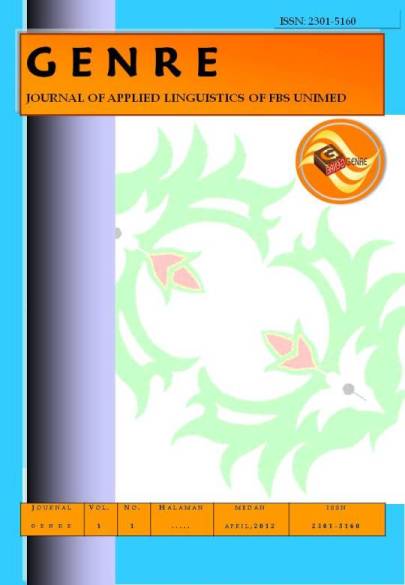CODE MIXING IN THE CLASSROOM INTERACTION OF SMKN 7 MEDAN
DOI:
https://doi.org/10.24114/gj.v13i4.65494Abstract
The objective of this study is to find out the type of code-mixing used by the teacher and students and the factors causing the teacher and students mix the language in classroom interaction. Code-mixing is a bilingualism phenomenon which has become very popular in society. It is used to prevent misunderstanding such the teacher and students in classroom interaction. This study was conducted by using descriptive qualitative design. The subjects of this study were the teacher and students from tenth grade of hotel accommodation in SMKN 7 Medan. The data were collected by recording the teacher and students’ utterances in classroom interaction, the interview result of teacher and questionnaire of students. From the research, it was found the type of code-mixing used by the teacher and students were word insertion, phrase insertion, and clause insertion. All of data belongs to outer code-mixing and the factors causing teacher did the code-mixing were speaker partner, bilingual or multilingual, and absence of vocabulary. And for the students, according to the percentages of their questionnaire result the data shows that out of 24 students 45,8% of them chose speaker partner as their reason did the code mixing, 8,3% chose bilingual or multilingual, and 45,9% chose absence of vocabulary.Downloads
Published
2024-10-20
Issue
Section
Articles
License
Copyright (c) 2025 Muhammad Azmi, Sumarsih

This work is licensed under a Creative Commons Attribution-NonCommercial-NoDerivatives 4.0 International License.
Authors who publish with this journal agree with the following terms:
- Authors retain copyright and grant the journal right of first publication with the work simultaneously licensed under a Creative Commons Attribution License that allows others to share the work with an acknowledgment of the work's authorship and initial publication in this journal.
- Authors are able to enter into separate, additional contractual arrangements for the non-exclusive distribution of the journal's published version of the work (e.g., post it to an institutional repository or publish it in a book), with an acknowledgment of its initial publication in this journal.
- Authors are permitted and encouraged to post their work online (e.g., in institutional repositories or on their website) prior to and during the submission process, as it can lead to productive exchanges, as well as earlier and greater citation of published work (See The Effect of Open Access).
- This work is licensed under a Creative Commons Attribution-ShareAlike 4.0 International License.







.png)


